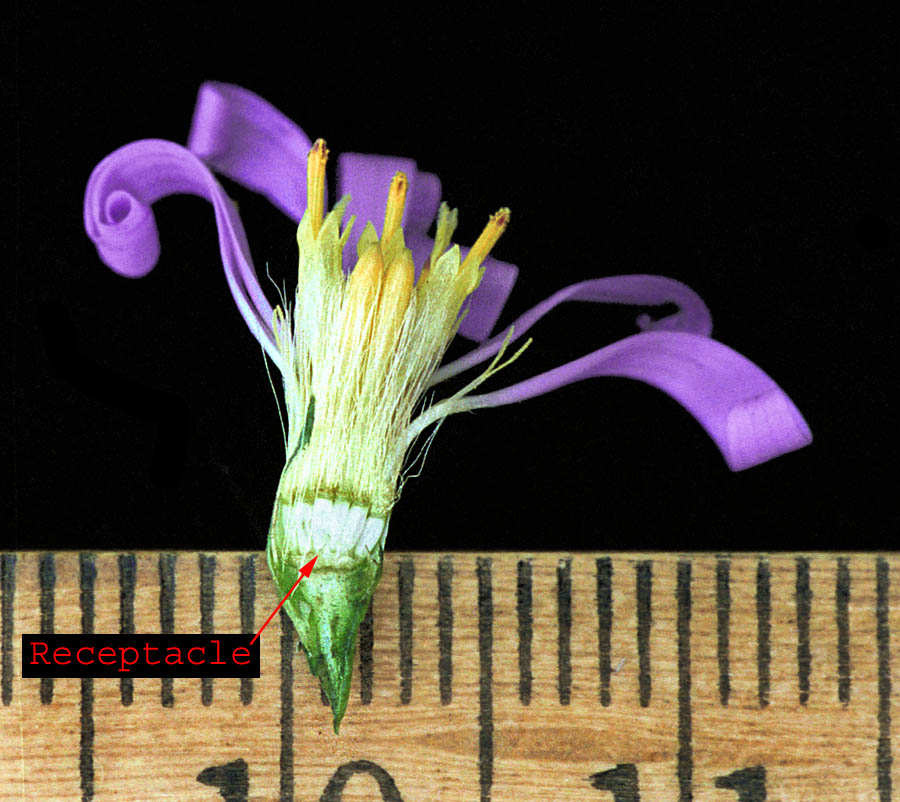
Smooth Aster
Aster laevis

Smooth Aster
Flower Head Dissected
(Longitudinal Section)
Hudson Bay Regional Park
31-July-2005
The characteristics of the leaves and petioles are important in distinguishing between the Aster species of the Canadian prairies. The key to the species in Budd's Flora requires the following of A. laevis:
|
leaves clasping | |
|
basal and lower stem leaves sessile or subsessile; NOT [basal and lower stem leaves petioled or narrowed to a petiolar base] |
The key to the species in Flora of Alberta requires:
|
lower leaves linear, lanceolate or oblanceolate, mostly sessile or nearly so; NOT [lower leaves long-petioled, blades ovate to lanceolate, often cordate at base, serrate to serrulate] | |
|
lower leaves wing-petioled, the upper auriculate-clasping |
In fact, the leaf and petiole characteristics vary depending upon the leaf location. The basal leaves (if present) and lowest stem leaves are petioled but not cordate. Further up the stem, the leaves narrow to a winged petiole. The upper stem leaves are sessile and often auriculate-clasping. The rest of the key answers are listed below.
|
Laevis: Answers to key questions in Budd's Flora and Flora of Alberta leading to this species.
| |||||||||||||||||||||||||||||||||||||||||||
Aster: Answers to key questions in Budd's Flora and Flora of Alberta leading to this genus. The answers do not match all species of Aster found in the Canadian prairies, but they do match this species.
|